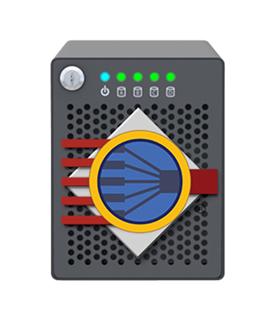Synology DX1215 Diskless System 12-Bay Expansion Unit. Form Factor: 12-Bay HDD Interface: 3.5' or 2.5' SATA(III) / SATA (II) X 12 (hard drives not included) Management: RAID Management: - Volume Type: Basic, JBOD, RAID 0, RAID 1, RAID 10, RAID 5, RAID 5+Spare, RAID 6 - RAID Migration: from Basic to RAID 1, Basic to RAID 5, Basic to RAID 5+Spare, RAID 1 to RAID 5, RAID 1 to RAID 5+Spare. Getting to RAID, as I wrote, I prefer RAID-10 (not to be confused with RAID 0+1) over RAID-5 since the level 10 offers better performance and, at the same time a superior fault-tolerance than RAID-5 (a RAID-10 array can loose up to two HDDs as long as they belong to two different sub-arrays); for more infos about raid-10 please refer to this.
RAID device drivers which support management functionality can register their services with the bio(4) driver. bioctl Image cleaner v1 1. then can be used to maintain RAID volumes.
In the first synopsis, RAID controllers are managed. device specifies either a drive (e.g. sd0) or a RAID controller (e.g. ami0). For operations which will be performed against ses(4) or safte(4) enclosures, it is also possible to directly specify the enclosure name (e.g. safte0).
In the second synopsis, softraid(4) devices are managed. device specifies either a drive (e.g. sd0) or a softraid(4) device (e.g. softraid0).
Maccaption 6 1 0 1 kg download free. The options for RAID controllers are as follows:
-aalarm-functiondisable- Disable the alarm on the RAID controller.
enable- Enable the alarm on the RAID controller.
get- Retrieve the current alarm state (enabled or disabled).
silence|quiet- Silence the alarm if it is currently beeping.
The alarm-function may be specified as given above, or by the first letter only (e.g. -a e).
-bchannel:target[.lun]
-Hchannel:target[.lun]
-Hchannel:target[.lun]-h-i-q-Rdevice | channel:target[.lun]-tpatrol-functionstop- Stop the patrol on the RAID controller.
start- Start the patrol on the RAID controller.
get- Retrieve the current patrol configuration.
disable- Disable the patrol functionality.
manual- Enable the patrol functionality to start/stop manually.
auto[.interval[.start]]- Enable the patrol functionality to start/stop automatically in every interval seconds, starting the first iteration after start seconds.
-uchannel:target[.lun]-vIn addition to the relevant options listed above, the options for softraid(4) devices are as follows:
-Cflag[,flag[,..]]bioctl. May be one of: force- Force the operation; for example, force the creation of volumes with unclean data in the metadata areas.
noauto- Do not automatically assemble this volume at boot time.
-craidlevelSoftraid Raid 10
Create a softraid(4) device of level raidlevel. The device must begin with 'softraid' followed by a number.Valid raidlevels are:
0- RAID 0: A striping discipline.
1- RAID 1: A mirroring discipline.
5- RAID 5: A striping discipline with floating parity chunk.
C- CRYPTO: An encrypting discipline.
c- CONCAT: A concatenating discipline.
The RAID 0, RAID 1 and CONCAT disciplines require a minimum of two devices to be provided via -l. RAID 5 requires at least three devices and the CRYPTO discipline requires exactly one.
-d-kkeydisk-lspecial[,special[,..]]-c.-Odevice | channel:target[.lun]-P-ppassfileSoftraid 5
-rrounds-s
